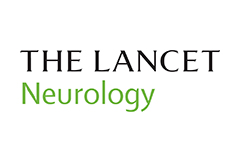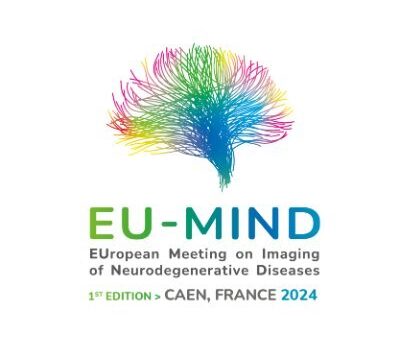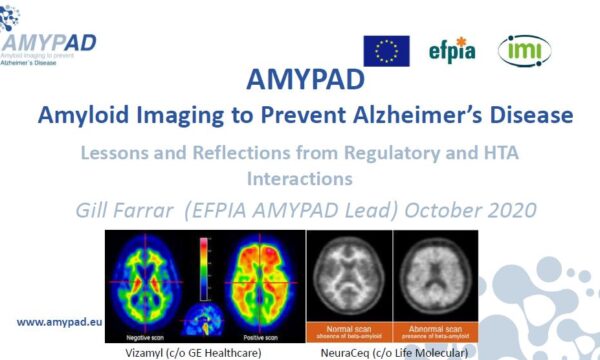The collaboration within the AMYPAD consortium has been productive and efficient during the fifth year of the project. In this piece, we wanted to reflect back on some of the important advances and major achievements made by each Work Package (WP).
Thanks to the WP1 (Overall project governance and management), AMYPAD members and collaborators gathered online for its second AMYPAD General Assembly and had a productive two-day meeting (8-9 October). The meeting was well-attended, with a focus on scientific progress and discussion on the technical developments. The team also submitted the fifth Periodic Report of AMYPAD to IMI and implemented the necessary changes and modifications to the Grant Agreement due to the 1-year extension request. WP1 played an important role in the development and submission of 12 key project deliverables through 2021. They also closely monitored the AMYPAD budget to ensure alignment with the current project plan, especially in view of the project’s extension. Work has continued on the development of sustainability strategies by establishing synergies with other projects, related initiatives and researchers.
In 2021, WP2 (Tracer delivery, PET scanning and image analysis) continued to focus on ensuring the correct development of PET scanning across the imaging sites along with their transfer and analysis. During this year, the first quantitative outcomes of amyloid deposition have been delivered to the respective trial sponsors. Efforts have been mainly devoted to refining PET analysis methods and pipelines by evaluating robustness and ensuring good performance of the Centiloid conversion and to developing imaging harmonization procedures. Several research projects aiming to improve the quantification methods of amyloid PET scans have been designed including an open-source software PET analysis package, to be released to the amyloid research community. In addition, longitudinal data has been quantified for the first time in the project and initial descriptive analyses show the expected behaviour.
The Diagnostic and Patient Management Study (DPMS) (WP3) has reached the end of the clinical phase, will all 844 participants across eight European sites having completed the protocol visits and scans by the end of June 2021. The data quality check and cleaning process has been finalised. The first version of the paper on the primary endpoint will be shared with all co-authors shortly.
2021 has been the most successful year to date in relation to the rate of recruitment and scanning of the Prognostic and Natural History Study (PNHS) (WP4). Sites have to a large extent been able to recover from the impact of COVID-19 and three additional Parent Cohorts have joined the PNHS study, now including 10 parent cohorts of which 8 parent cohorts are actively enrolling participants into the study (EPAD LCS, EMIF-AD (60++), EMIF-AD (90+), ALFA+, FACEHBI, FPACK, UCL-2020-412 and Microbiota)), one (H70) is expected to actively enrol participants soon and the final one (DELCODE) is not actively enrolling participants, but a collaboration agreement is in place to cover the proposal to only share data. In total, 1181 participants have consented into the PNHS study and 1220 scans have been performed at the end of 2021. Out of the 1220 scans 305 are baseline scans, and 723 are longitudinal. The non-EPAD parent cohorts have been able to share their historical data and with this abundance of data coming in, there has been considerable effort in integration and harmonization of, both imaging and non-imaging data. The first integrated dataset, including 3 Parent Cohorts, 252 variables across 668 participants have been made available to the AMYPAD consortium in November 2021. Finally, in 2021 four sites (UEDIN, Tayside, CHUT and Fundaciò ACE) finished the recruitment and scanning of their participants.
WP5 (Disease modelling and monitoring treatment) also had a productive year with the expansion of the collection of external datasets with available amyloid PET imaging (in close collaboration with WP2). WP5 used its fifth year to continue its European external collaborations, analysed the amyloid accumulation process using data-driven methods, and carried out analysis using advanced and multi-modal disease modelling approaches. These endeavours have resulted in several international presentations and publications.
The team behind WP6 (Ethics, communication and dissemination) provided a big support for the communication and dissemination of AMYPAD outputs. Throughout the year, WP6 coordinated the regular maintenance of the communication tools. Amongst many highlights, the AMYPAD project has been presented at key international conferences such as the International Conference on Alzheimer’s and Parkinson’s Diseases (AD/PD), the Alzheimer’s Association International Conference (AAIC), the European Association of Nuclear Medicine (EANM) congress, the Clinical Trials on Alzheimer’s Disease conference (CTAD) and the ‘Mapping Neuroreceptors at Work’ (NRM) event. Additionally, the AMYPAD consortium has published additional papers. In parallel, the ethics team within WP6 finalised its work investigating the differences in the way that Alzheimer’s disease is understood in a research context compared to the lay audience. The ethics team also investigated how the method of reflective equilibrium (RE), which stems from the field of bioethics, can be used to decide in a specific clinical case whether biomarker testing should be offered.
The last year has been really exciting for our project. In year 5, AMYPAD performed amyloid PET scans on an unprecedented scale of participants suspected to be in the early stages of Alzheimer’s disease. In parallel, technical, and operational aspects have been established and optimised. Data is being collected. The next and final year will put the efforts on the data acquisition, management and analysis activities, resulting in the publication of additional results from the AMYPAD scientific work. Additionally, the team will continue its collaborations during Year 6 in terms of its long-term sustainability plans and will define a sustainability strategy by identifying funding sources and potential customers, discussing organisational models, planning access to data and other resources. We look forward to the busy months ahead and hope to share great outputs with all of you soon!



